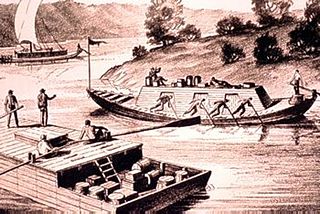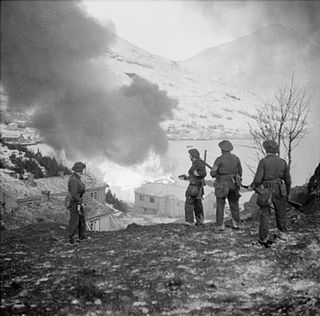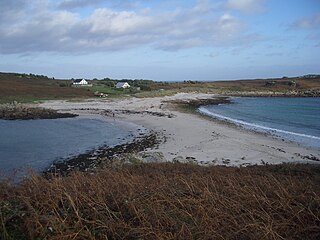
Perry County is a county located in the U.S. state of Mississippi. As of the 2010 census, the population was 12,250. The county seat is New Augusta. The county is named after the War of 1812 naval hero, Oliver Hazard Perry.

Cave-In-Rock is a village in Hardin County, Illinois, United States. Its principal feature and tourist attraction is nearby Cave-In-Rock, on the banks of the Ohio River. In 1816, the earliest known permanent white settlers arrived and started building a town near the cave. The town was originally known as Rock and Cave, Illinois, with a post office under this name. On October 24, 1849, the town was officially renamed Cave-In-Rock. Cave-In-Rock was incorporated as a village in 1901. The population was 318 at the 2010 census.

Rosiclare is a city in Hardin County, Illinois, along the Ohio River. The population was 1,160 at the 2010 census, down from 1,213 at the 2000 census.

Grand Tower is a city in Jackson County, Illinois, United States. The population was 605 at the 2010 census. The town gets its name from Tower Rock, a landmark island in the Mississippi River.

Simmesport is a town in Avoyelles Parish, Louisiana, United States. The population was 2,161 at the 2010 census. It is located near the juncture of the Red and Atchafalaya rivers with an outflow channel of the Mississippi River.

This is a list of the extreme points of North America: the points that are highest and lowest, and farther north, south, east or west than any other location on the continent. Some of these points are debatable, given the varying definitions of North America.
This is a list of the extreme points of The Americas, the points that are farther north, south, east or west than any other location on the continent. The continent's southernmost point is often said to be Cape Horn, which is the southernmost point of the Chilean islands. The Americas cross 134° of longitude east to west and 124° of latitude north to south.

The Partridge River and its tributary the Little Partridge River are small rivers in rural west-central Minnesota in the United States. The Partridge is a 32.6-mile-long (52.5 km) tributary of the Crow Wing River, via which it is part of the Mississippi River watershed.

James Ford, born James N. Ford, also known as James N. Ford, Sr. the "N" possibly for Neal, was an American civic leader and business owner in western Kentucky and southern Illinois, late 1790s to mid-1830s. Despite his clean public image as a "Pillar of the Community", Ford was secretly a river pirate and the leader of a gang that would come to be known as the "Ford's Ferry Gang". His gang was the river equivalent of highway robbers; they would hijack flatboats and Ford's "own river ferry" for tradable goods from local farms, coming down the Ohio River. Ford was an Illinois associate of Isaiah L. Potts and the Potts Hill Gang, highway robbers, of the infamous Potts Inn. James Ford also had an association with illegal slaver trader and kidnapper of free blacks, John Hart Crenshaw, and may have taken part in the Illinois version of the Reverse Underground Railroad. At one point, they used the "Cave-in-Rock" as their headquarters, on the Illinois side of the lower Ohio River, which is approximately 85 miles below Evansville, Indiana.

Micajah "Big" Harpe, born Joshua Harper, and Wiley "Little" Harpe, born William Harper, were murderers, highwaymen and river pirates who operated in Tennessee, Kentucky, Illinois and Mississippi in the late 18th century. They are often considered the earliest documented serial killers in the United States, reckoned from the colonial era forward.
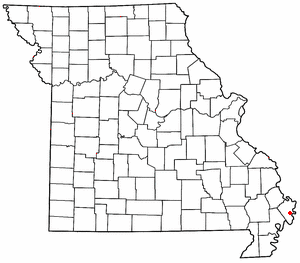
Wolf Island is an unincorporated community in eastern Mississippi County, Missouri, United States. It is located on Route 77, approximately nine miles east of East Prairie.
Border irregularities of the United States, particularly panhandles and highway incursions into other jurisdictions, are shown here. Often they are a result of borders which do not conform to geological features.

The Banditti of the Prairie, also known as "The Banditti", "Prairie Pirates", "Prairie Bandits", and "Pirates of the Prairie", in the U.S. states of Illinois, Indiana, Ohio, and the Territory of Iowa, were a group of loose-knit outlaw gangs, during the early-mid-19th century. Though bands of roving criminals were common in many parts of Illinois, the counties of Lee, DeKalb, Ogle, and Winnebago were especially plagued by them. The new crime wave in the region of the frontier Middle West may have occurred following the crackdown on southern outlaws by the rising vigilante-regulator movement and the breakup of the criminal syndicate of John A. Murrell and his gang, the "Mystic Clan" in the Southern United States. In the year 1841, the escalating pattern of house burglary, horse and cattle theft, stagecoach and highway robbery, counterfeiting, and murder associated with the Banditti had come to a head in Ogle County. As the crimes continued, local citizens formed bands of vigilantes known as Regulators. A clash between the Banditti and the Regulators in Ogle County near Oregon, Illinois, resulted in the outlaws' demise and decreased Banditti activity and violent crime within the county.

Samuel Ross Mason, also spelled Meason, was a Virginia militia captain, on the American western frontier, during the American Revolutionary War. After the war, he became the leader of the Mason Gang, a criminal gang of river pirates and highwaymen on the lower Ohio River and the Mississippi River in the late 18th and early 19th centuries. He was associated with outlaws around Red Banks, Cave-in-Rock, Stack Island, and the Natchez Trace.
Philip Alston was an 18th-century counterfeiter, both before and after the American Revolution. He operated in Virginia and the Carolinas before the war, and in Kentucky and Illinois afterward. He was associated with Cave-in-Rock and his son, outlaw Peter Alston, and counterfeiter John Duff. He was an early American settler in Natchez, as well as in the Cumberland and Red River valleys in Kentucky and Tennessee.
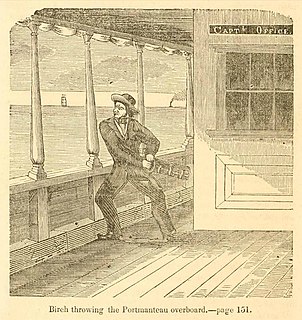
Robert H. "Three-Fingered" Birch, born Robert Henry Birch, was a 19th-century American adventurer, criminal, soldier, lawman, postmaster, and prospector. He was a member of the infamous "Banditti of the Prairie" in his youth, whose involvement in the torture-murder of Colonel George Davenport in 1845 led to his turning state's evidence against his co-conspirators. Birch was also the discoverer of the Pinos Altos gold mine with Jacob Snively and James W. Hicks. During the American Civil War, he served in the American Southwest with the Confederate forces of the Arizona Rangers and 2nd Texas Cavalry.
The Pine River is a 56.9-mile-long (91.6 km) tributary of the Mississippi River in northern Minnesota, United States.
Peter Alston was an American counterfeiter, horse thief, highwayman, and river pirate of the late 18th and early 19th Centuries. He is believed to have been an associate of serial killer Little Harpe, who was notorious for the murder of outlaw Samuel Mason in 1803.

The Battle of Tres Jacales was an Old West gunfight that occurred on June 30, 1893. While out searching for a gang of rustlers, a group of American lawmen under the command of the Texas Ranger Frank Jones were attacked at the Mexican village of Tres Jacales. During the exchange of gunfire, Jones was mortally wounded and the remaining Americans were forced to retreat back into Texas.












